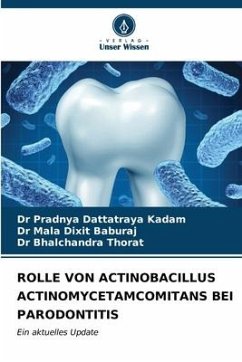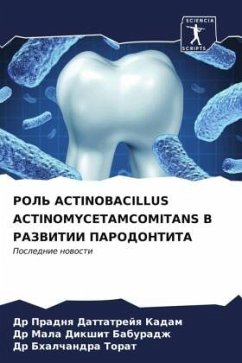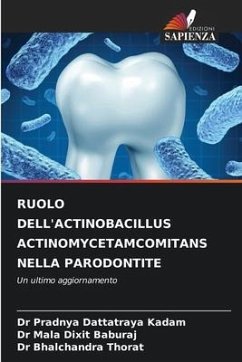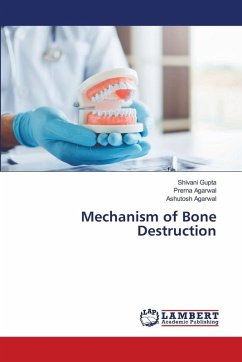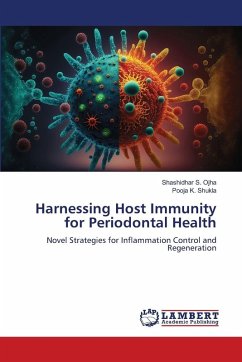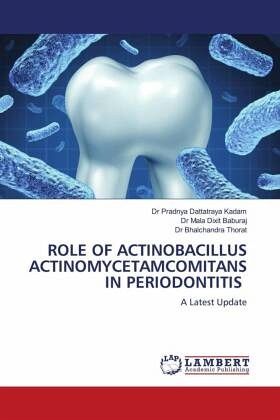
ROLE OF ACTINOBACILLUS ACTINOMYCETAMCOMITANS IN PERIODONTITIS
A Latest Update
Versandkostenfrei!
Versandfertig in 6-10 Tagen
45,99 €
inkl. MwSt.

PAYBACK Punkte
23 °P sammeln!
A gram-negative, facultative anaerobic bacillus called Aggregatibacter actinomycetemcomitans (Actinobacillus actinomycetemcomitans) causes periodontal disorders i.e., periodontitis, which leads to bone resorption. The pathogenic bacteria Actinobacillus actinomycetemcomitans (AA comitans) has a significant role in a number of periodontal disorders. Strong leukotoxin, lipopolysaccharide (LPS), cell surface-associated substances, enzymes, and less well-defined virulence factors that will influence the action of the host defenses are some of the potential virulence factors of this bacterium. When ...
A gram-negative, facultative anaerobic bacillus called Aggregatibacter actinomycetemcomitans (Actinobacillus actinomycetemcomitans) causes periodontal disorders i.e., periodontitis, which leads to bone resorption. The pathogenic bacteria Actinobacillus actinomycetemcomitans (AA comitans) has a significant role in a number of periodontal disorders. Strong leukotoxin, lipopolysaccharide (LPS), cell surface-associated substances, enzymes, and less well-defined virulence factors that will influence the action of the host defenses are some of the potential virulence factors of this bacterium. When this organism is exposed to the immune system, GroEL, DnaK, HtpG, LTX, CDT, LPS, and cell surface-associated materials all release cytokines. The primary driver of tissue lysis and bone resorption in a periodontal disease is the production of cytokines. In this review of literature, we discussed the mechanisms that can cause bone resorption as well as the pathogenic roles that A. actinomycetemcomitans plays in periodontal disease.



